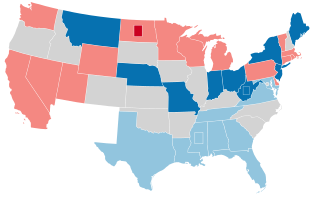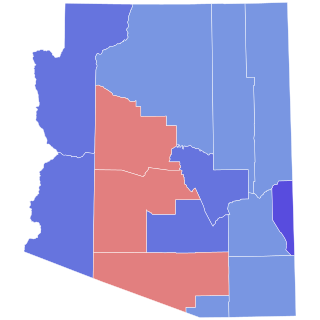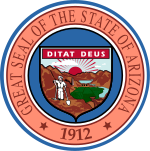
The 1976 United States Senate elections was an election for the United States Senate. Held on November 2, the 33 seats of Class 1 were contested in regular elections. They coincided with Democrat Jimmy Carter's presidential election and the United States Bicentennial celebration. Although almost half of the seats decided in this election changed parties, Carter's narrow victory did not provide coattails for the Democratic Party. Each party flipped seven Senate seats, although, one of the seats flipped by Democrats was previously held by a Conservative.

The 1972 United States Senate elections were held on November 7, with the 33 seats of Class 2 contested in regular elections. They coincided with the landslide re-election of Republican President Richard Nixon. Despite Nixon's landslide victory, Democrats increased their majority by two seats. The Democrats picked up open seats in Kentucky and South Dakota, and defeated four incumbent senators: Gordon Allott of Colorado, J. Caleb Boggs of Delaware, Jack Miller of Iowa, and Margaret Chase Smith of Maine. The Republicans picked up open seats in New Mexico, North Carolina, and Oklahoma, and defeated one incumbent, William B. Spong Jr. of Virginia.

The 1964 United States Senate elections were held on November 3. The 33 seats of Class 1 were contested in regular elections. Special elections were also held to fill vacancies. They coincided with the election of President Lyndon B. Johnson by an overwhelming majority, to a full term. His Democratic Party picked up a net two seats from the Republicans. As of 2023, this was the last time either party has had a two-thirds majority in the Senate, which allowed the Senate Democrats to override a veto, propose constitutional amendments, or convict and expel certain officials without any votes from Senate Republicans. However, internal divisions would have prevented the Democrats from having done so. The Senate election cycle coincided with Democratic gains in the House in the same year.

Henry Fountain Ashurst was an American Democratic politician and one of the first two senators from Arizona. Largely self-educated, he served as a district attorney and member of the Arizona Territorial legislature before fulfilling his childhood ambition of joining the United States Senate. During his time in the Senate, Ashurst was chairman of the Committee on Indian Affairs and the Judiciary Committee.

The 1912–13 United States Senate elections were held on various dates in various states. They were the last U.S. Senate elections before the ratification of the Seventeenth Amendment in 1913, establishing direct elections for all Senate seats. Senators had been primarily chosen by state legislatures. Senators were elected over a wide range of time throughout 1912 and 1913, and a seat may have been filled months late or remained vacant due to legislative deadlock. Some states elected their senators directly even before passage of Seventeenth Amendment. Oregon pioneered direct election and experimented with different measures over several years until it succeeded in 1907. Soon after, Nebraska followed suit and laid the foundation for other states to adopt measures reflecting the people's will. By 1912, as many as 29 states elected senators either as nominees of their party's primary or in conjunction with a general election.

The 1910–11 United States Senate election were held on various dates in various states. As these U.S. Senate elections were prior to the ratification of the Seventeenth Amendment in 1913, senators were primarily chosen by state legislatures. Senators were elected over a wide range of time throughout 1910 and 1911, and a seat may have been filled months late or remained vacant due to legislative deadlock. However, some states had already begun direct elections during this time. Oregon pioneered direct election and experimented with different measures over several years until it succeeded in 1907. Soon after, Nebraska followed suit and laid the foundation for other states to adopt measures reflecting the people's will. By 1912, as many as 29 states elected senators either as nominees of their party's primary or in conjunction with a general election.

The 1822–23 United States Senate elections were held on various dates in various states. As these U.S. Senate elections were before the ratification of the Seventeenth Amendment in 1913, senators were chosen by state legislatures. Senators were elected over a wide range of time throughout 1822 and 1823, and a seat may have been filled months late or remained vacant due to legislative deadlock. In these elections, terms were up for the senators in Class 2.

The 1928 United States Senate elections in Arizona took place on November 6, 1928. Incumbent Democratic U.S. Senator Henry F. Ashurst ran for reelection to a fourth term, defeating Republican nominee former U.S. Senator Ralph H. Cameron in the general election. Cameron was defeated in the previous election year, in 1926, by then-U.S. Congressman Carl T. Hayden, leading Cameron to decide to challenge Ashurst in order to return to the United States Senate.

The 1934 United States Senate elections in Arizona took place on November 3, 1934. Incumbent Democratic U.S. Senator Henry F. Ashurst ran for reelection to a fifth term, defeating Republican nominee Joseph Edward Thompson in the general election by a wide margin.

The 1940 United States Senate elections in Arizona took place on November 5, 1940. Incumbent Democratic U.S. Senator Henry F. Ashurst ran for reelection to a sixth term, but was defeated in the Democratic primary to challenger Ernest McFarland.

The 1928 Arizona gubernatorial election took place on November 6, 1928. Despite a fairly poor economy, a 15-point loss by Al Smith for the Arizona electoral votes, and having served for nearly 6 full terms, Hunt only narrowly lost the general election. Other state Democrats like Senator Ashurst and Representative Douglas both won re-election. John C. Phillips became the second Republican to serve as Arizona Governor, and the first to beat Hunt in a general election.

The 1952 United States Senate election in Tennessee was held on November 4, 1952. Incumbent Democratic Senator and President pro tempore of the Senate Kenneth D. McKellar ran for re-election to a seventh term in office but was defeated in the Democratic primary by U.S. Representative Al Gore Sr. Gore easily won the general election against Republican Hobart Atkins.

The 1916 United States Senate elections in Arizona took place on November 7, 1916. Incumbent Democratic U.S. Senator Henry F. Ashurst ran for reelection to a second term, defeating Republican former Territorial Governor Joseph H. Kibbey in the general election by a comfortable margin.

The 1954 Arizona gubernatorial election took place on November 2, 1954. Incumbent Governor John Howard Pyle, the first Republican elected to the office in two decades, ran for reelection for a third term.

The 1922 United States Senate election in Texas was held on November 7, 1922. Incumbent Democratic U.S. Senator Charles Culberson ran for re-election to a fifth term, but lost the Democratic primary. A runoff was held between former Governor Pa Ferguson and Railroads Commissioner Earle Bradford Mayfield.

The United States Senate election of 1922 in New Jersey was held on November 7, 1922.

The 1922 United States Senate election in Minnesota took place on November 7, 1922. Farmer–Labor challenger Henrik Shipstead defeated incumbent Republican U.S. Senator Frank B. Kellogg and Democratic challenger Anna Dickie Olesen.

Elections were held in Illinois on Tuesday, November 5, 1940.

Elections were held in Illinois on Tuesday, November 3, 1936.

Charles Hays Rutherford was an American lawyer and politician from Arizona who served in the Arizona State Senate from 1917 through 1918, during the 3rd Arizona State Legislature. He also served during the 6th Arizona State Legislature. He served in the Army Reserve, first in the JAG corps, then in the Specialist Reserve Corps, eventually attaining the rank of Colonel. From 1930 until his death in 1950 he served as a civilian aide to the Secretary of War. He practiced law, first in Indiana early in his career, and then in Arizona, until he was disbarred by the Arizona Supreme Court in 1949.






















